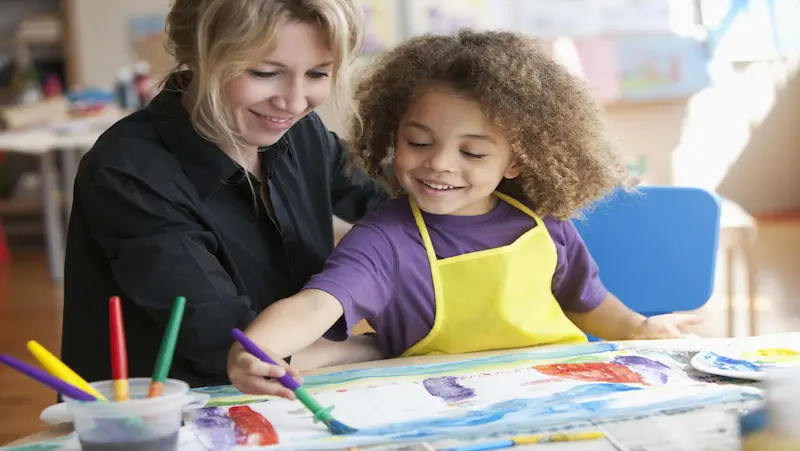Life as a student can be pretty exciting, right? New experiences, friendships, and opportunities are around every corner. But let’s face it, it’s not all rainbows and sunshine. With those upcoming exams, assignments piling up, and the constant juggling between academics and social life, stress can creep in faster than you realize. That’s why understanding how to manage stress is crucial, even at this early stage of life. In this guide, we’re diving into the world of stress management for young students. We’ll explore practical tips, strategies, and insights to help you navigate the pressures of student life while keeping your cool. So, whether you’re a high school whiz or a college newbie, buckle up as we embark on this journey to a more balanced and stress-resilient you.
Table of contents
- Recognizing Signs of Stress in Young Students
- Building a Foundation for Stress Management
- Mindfulness and Relaxation Techniques
- Developing Effective Time Management Skills
- Stress Management Through Art, Music, and Play
- Building Resilience and Growth Mindset
- Digital Resources and Apps for Stress Management
- Conclusion
- Frequently Asked Questions
Recognizing Signs of Stress in Young Students
As parents, educators, and caregivers, it’s essential for us to keep a watchful eye on the well-being of our young students. While a certain amount of stress is a natural part of life, it’s crucial to recognize when it might be taking a toll on them. Children and adolescents might not always have the words to express their feelings, so being attuned to behavioral, emotional, and physical changes can provide valuable insights into their emotional state.

Behavioral Changes and Emotional Symptoms
Pay attention to shifts in their behavior and emotions. Are they suddenly more irritable, withdrawn, or prone to outbursts? These could be signs of underlying stress. Keep an eye out for changes in sleep patterns, appetite, or interests. For instance, a typically outgoing child development becoming unusually reserved might be trying to cope with stress.
Physical Symptoms of Stress in Young Students
Stress doesn’t just affect the mind – it can manifest physically too. Frequent headaches, stomachaches, or even unexplained aches and pains might be linked to heightened stress levels. Some children might also experience changes in their energy levels – being either excessively lethargic or hyperactive.
Academic and Social Impacts of Unmanaged Stress
Stress can significantly impact a student’s academic performance and social interactions. Notice if a once-enthusiastic student starts showing a decline in their grades or loses interest in kids activities they once enjoyed. They might also struggle with concentrating, leading to an inability to complete assignments or pay attention in class. Additionally, unmanaged stress can affect their relationships with peers, possibly causing withdrawal from friends and social situations.
Building a Foundation for Stress Management

Creating a Safe and Supportive Learning Environment
Just like plants thrive in the right environment, individuals flourish when surrounded by safety and support. Whether you’re a teacher, a parent, or even just a friend, creating a safe space for someone to express their thoughts and concerns is crucial. When people feel heard and understood, it reduces the weight of stress they might be carrying.
In an educational setting, this means encouraging open discussions, actively listening to students’ worries, and promoting a non-judgmental atmosphere. Remember, it’s not just about the words spoken, but the environment you cultivate that truly makes a difference.
Developing Emotional Intelligence and Self-Awareness
Understanding our emotions is like deciphering a secret code. Emotional intelligence (EQ) is the key that unlocks this code. By honing your EQ, you can better comprehend not only your own feelings but also those of others around you. This heightened awareness allows you to address stressors before they escalate and to support others more effectively.
To boost your EQ, take time to reflect on your emotions regularly. What triggers joy? What sparks frustration? The more you know about your emotional landscape, the better equipped you are to manage stress and cultivate positive thinking for kids.
Teaching Healthy Coping Mechanisms
Life showers us with both sunny days and rainstorms. Teaching kids patience and healthy coping mechanisms is like handing out umbrellas – they shield us from the downpours of stress. Encourage activities that help manage stress, such as mindfulness exercises, deep breathing techniques, journaling, or engaging in hobbies.
As educators and mentors, introducing these techniques to students or those around you can be incredibly impactful. Remember, coping mechanisms aren’t just for the tough times – they’re tools for everyday well-being.
Mindfulness and Relaxation Techniques

Introduction to Mindfulness for Young Students
Mindfulness is all about being present in the moment, and fully engaged in what you’re doing without judgment. For young students, whose minds are often buzzing with various thoughts and emotions, introducing mindfulness games for kids can offer them a way to manage stress, improve focus, and boost their overall well-being. It’s like giving them a superpower to handle life’s challenges with grace.
Practicing Mindful Breathing and Meditation
One of the simplest yet most effective ways to start with mindfulness meditation for kids is through mindful breathing. Encourage students to find a quiet spot, sit or lie down comfortably, and pay attention to their breath. As they breathe in and out, they can observe how the air moves in and out of their bodies. This simple practice helps anchor their minds to the present moment, gently nudging away worries about the past or future.
Incorporating Relaxation Exercises into Daily Routines
Relaxation isn’t something reserved for special occasions; it’s a necessity that should be woven into everyday life. Help students understand that relaxation isn’t laziness, but rather a way to recharge their minds and bodies. Suggest incorporating short relaxation exercises into their routines. This could be as simple as a five-minute stretch, a moment of deep breathing before starting homework, or even taking a mindful walk outdoors.
Developing Effective Time Management Skills

Setting Goals and Prioritizing Tasks
At the heart of effective time management lies the ability to set clear goals and prioritize tasks accordingly. Begin by defining both short-term and long-term goals. Short-term goals give you quick wins and keep you motivated, while long-term goals provide a roadmap for your overall aspirations.
Once your goals are in place, it’s time to prioritize tasks. Not all tasks are created equal, and understanding which tasks are urgent, important, or can be delegated or deferred is crucial.
Creating a Structured Schedule and Routine
Structure is the backbone of time management. Crafting a well-organized schedule and routine helps you allocate time for specific activities and prevents the chaos of last-minute rushes. Start by dividing your day into blocks and assigning tasks to each block.
Be realistic about the time required for each task and include buffer periods to account for unexpected disruptions. Stick to your schedule as much as possible, but also remain adaptable when unforeseen events arise.
Balancing School, Extracurricular Activities, and Leisure Time
For students, finding a balance between academic responsibilities, extracurricular activities, and personal leisure can be challenging. The key is to integrate all these facets into your schedule thoughtfully. Allocate time for focused study sessions, but also schedule breaks to recharge your mind.
Engage in extracurricular activities that align with your passions and goals, but be mindful not to overcommit and stretch yourself thin. Lastly, prioritize leisure time for relaxation, hobbies, and spending time with loved ones.
Stress Management Through Art, Music, and Play

Art Therapy and Expression
In the realm of stress management for kids, art serves as both a sanctuary and a canvas for our emotions. Art therapy provides a safe space to express feelings that may be difficult to put into words. Whether it’s painting, drawing, sculpting, or any other form of artistic expression, the act of creating art can be profoundly cathartic. The process itself allows us to dive into the present moment, releasing pent-up tension and fostering self-discovery.
Music and Sound Therapy
Have you ever noticed how a particular song can instantly change your mood? Music possesses an extraordinary ability to influence our emotions. Sound therapy, whether through playing an instrument, singing, or simply listening to soothing melodies, can help regulate stress levels. The rhythm and harmony have a calming effect on our nervous system, offering respite from the chaos of daily life.
Play-Based Techniques for Stress Relief
Play is not just for children—it’s an essential part of being human. Engaging in playful activities as adults can be a fantastic stress-buster. Whether it’s engaging in board games, sports, or even imaginative role-play, these activities release endorphins that combat stress hormones. Playfulness promotes a sense of joy and helps us distance ourselves from our worries, even if just for a little while.
Building Resilience and Growth Mindset

Cultivating a Positive Mindset
Our mindset is like the lens through which we view the world. Cultivating a positive mindset doesn’t mean ignoring difficulties; rather, it’s about reframing them. Instead of dwelling on limitations, we focus on possibilities. When we face a setback, we choose to see it as an opportunity for growth rather than a roadblock. Embracing positivity doesn’t mean being unrealistic, but rather, approaching challenges with a hopeful and solution-oriented perspective.
Encouraging Self-Reflection and Learning from Challenges
Every challenge we overcome carries a lesson within it. Encouraging self-reflection during tough times allows us to unearth these lessons. What could we have done differently? What skills did we acquire? How did we evolve as individuals? Embracing mistakes as part of the kids learning app process transforms failures into stepping stones toward success. By analyzing our experiences, we can fine-tune our strategies and decisions, becoming wiser and more prepared for whatever lies ahead.
Fostering Resilience through Supportive Relationships
No one is an island, and having a support system is crucial for building resilience. Friends, family, mentors, and even colleagues can provide the emotional support needed during challenging times. These relationships remind us that we’re not alone in our struggles and that seeking help is a sign of strength, not weakness. Conversations, shared experiences, and empathetic ears can provide invaluable guidance and encouragement when we need it most.
Digital Resources and Apps for Stress Management

Stress Management Apps for Young Students
The teenage years can be overwhelming, with schoolwork, social pressures, and personal changes all contributing to stress. Fortunately, several apps are tailored to help young students cope:
1. Smiling Mind: This app introduces mindfulness and meditation techniques to kids health and teenagers. It offers guided sessions that are age-appropriate and can assist in building emotional resilience.
2. Headspace for Kids: A spin-off from the popular Headspace app, this version is designed to help children’s game develop mindfulness skills. It uses playful animations and exercises to engage young users.
Online Resources and Websites for Stress Relief
For those seeking stress relief through online schooling platforms, a wealth of resources awaits:
1. The Calm Collective: This website offers a collection of calming tools, from breathing exercises to journaling prompts. It’s a great place to explore different stress management techniques.
2. TED Talks on Mindfulness: TED has curated a selection of talks by experts in the field of mindfulness and stress reduction. These talks provide insights and practical tips for managing stress.
Interactive Tools for Stress Management and Mindfulness
Engaging with interactive tools can make stress management an enjoyable journey:
1. Breathe2Relax: An app that focuses on deep breathing techniques, helping users manage anxiety and stress through guided breathing exercises.
2. Journey – Diary, Journal: Writing can be a therapeutic way to manage stress. Journey is a digital diary that lets you express your thoughts, track your emotions, and reflect on your day.
Conclusion
In the journey of young students, managing stress emerges as a vital skill. “Unwind and Thrive” not only illuminates the challenges they face but also offers a guiding light. As we’ve explored various techniques together, it’s clear that through mindfulness, self-care, and seeking support, these students can sculpt a balanced life.
Remember, stress is a companion in this adventure, but with the right tools, its overwhelming shadow can be diminished. So go forth, brave hearts, and may your path be one of unwinding growth and thriving resilience.
Also, BrightChamps provides a comprehensive platform for learning about money for kids, offering interactive and engaging resources that teach financial literacy, budgeting, saving, and other essential money management skills.
Frequently Asked Questions
A1. Young students often stress about exams, social pressures, workload, and future uncertainties.
A2. Stress can hinder focus, memory, and motivation, leading to lower academic performance.
A3. Deep breathing, exercise, journaling, and talking to someone they trust can help manage stress.
A4. Active listening, open conversations, and teaching coping skills can provide valuable support.
A5. Yes, activities like deep belly breathing and simple mindfulness exercises can be beneficial.
A6. Physical activity releases endorphins, reducing stress and improving mood in students.
A7. Yes, techniques like 4-7-8 breathing and guided imagery can help alleviate stress.
A8. Effective time management reduces last-minute pressures and creates a balanced routine.
A9. Yes, apps like Headspace and Calm offer mindfulness exercises and stress-relief tools.
A10. Absolutely, stress management workshops can equip students with valuable tools for life.


 We are an army of educators and passionate learners from BrightChamps family, committed to providing free learning resources to kids, parents & students.
We are an army of educators and passionate learners from BrightChamps family, committed to providing free learning resources to kids, parents & students.













